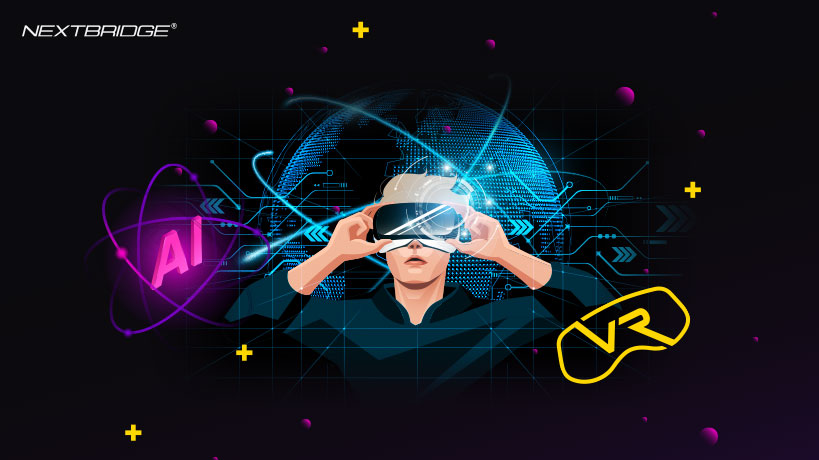 Back to all articles
Back to all articles
Blogs
The Synergy of AI and VR: Revolutionizing Immersive Experience


The convergence of Artificial Intelligence (AI) and Virtual Reality (VR) technologies has sparked a revolution in the realm of immersive experiences. By combining the computational power and intelligence of AI with the immersive environments of VR, a whole new world of possibilities has emerged. From gaming and education to healthcare and training simulations, the integration of AI and VR is reshaping the way we interact with virtual worlds.
Can AI and VR be Combined?
Yes, AI and VR can be combined to create unimaginable experiences. In this blog post, we will delve into the various ways AI and VR are merging to create transformative and captivating experiences.

Intelligent Virtual Characters
One of the most exciting applications of AI and VR integration is the creation of intelligent virtual characters. AI algorithms empower these characters with advanced capabilities, such as natural language processing, computer vision, and machine learning. As a result, users can engage in realistic and dynamic interactions with virtual characters, adding a new level of immersion to VR environments.
Personalized Experiences
AI plays a significant role in tailoring VR experiences to individual users. By analyzing user preferences, behaviors, and interactions, AI algorithms can customize the virtual environment, challenges, or content based on the user's abilities, interests, or learning objectives. This personalization enhances engagement, satisfaction, and overall learning outcomes.

Real-time Analytics and Adaptation
The combination of AI and VR enables real-time analysis of user data during VR experiences. This data can be utilized to adapt and refine the virtual environment, dynamically adjust difficulty levels, provide immediate feedback, and generate new content based on the user's actions and performance. These adaptive features enhance the immersive nature of VR experiences while facilitating personalized and engaging interactions.
Virtual Training and Simulations
AI-powered virtual trainers and simulated environments are revolutionizing training and skill development. By leveraging AI capabilities, virtual trainers can provide realistic and interactive training experiences, offering guidance, feedback, and adaptability. Users can engage in lifelike simulations, practicing complex tasks or scenarios within a safe and controlled environment. This combination of AI and VR is particularly valuable in domains such as healthcare, aviation, and emergency response training.
Natural Language Interaction
AI-driven natural language processing enriches communication and interaction within VR environments. Users can engage in realistic conversations with AI-controlled virtual characters, enabling more immersive and engaging experiences. Natural language interaction opens avenues for educational applications, interactive storytelling, and virtual assistance, further blurring the lines between virtual and real-world interactions.
Intelligent Assistance
AI serves as an intelligent assistant within VR environments, offering contextual information, answering queries, and guiding users through complex tasks or scenarios. This capability finds extensive use in educational settings, where AI-powered virtual assistants provide personalized support, cater to individual learning styles, and offer adaptive feedback, enhancing the learning process within virtual environments.

Conclusion
The amalgamation of AI and VR is transforming the landscape of immersive experiences. Through intelligent virtual characters, personalized adaptations, real-time analytics, virtual training, natural language interaction, and intelligent assistance, the synergy of AI and VR is reshaping the way we engage with virtual worlds.
The potential of this integration is vast and evolving, with ongoing research and development efforts pushing the boundaries of what is possible. As VR and AI continue to advance hand in hand, we can anticipate even more captivating, immersive, and intelligent experiences that bridge the gap between the virtual and the real.
Don't hire us right away
talk to our experts first,
Share your challenges, & then decide if we're the right fit for you! Talk to Us
Partnerships & Recognition
Commitment to excellence






